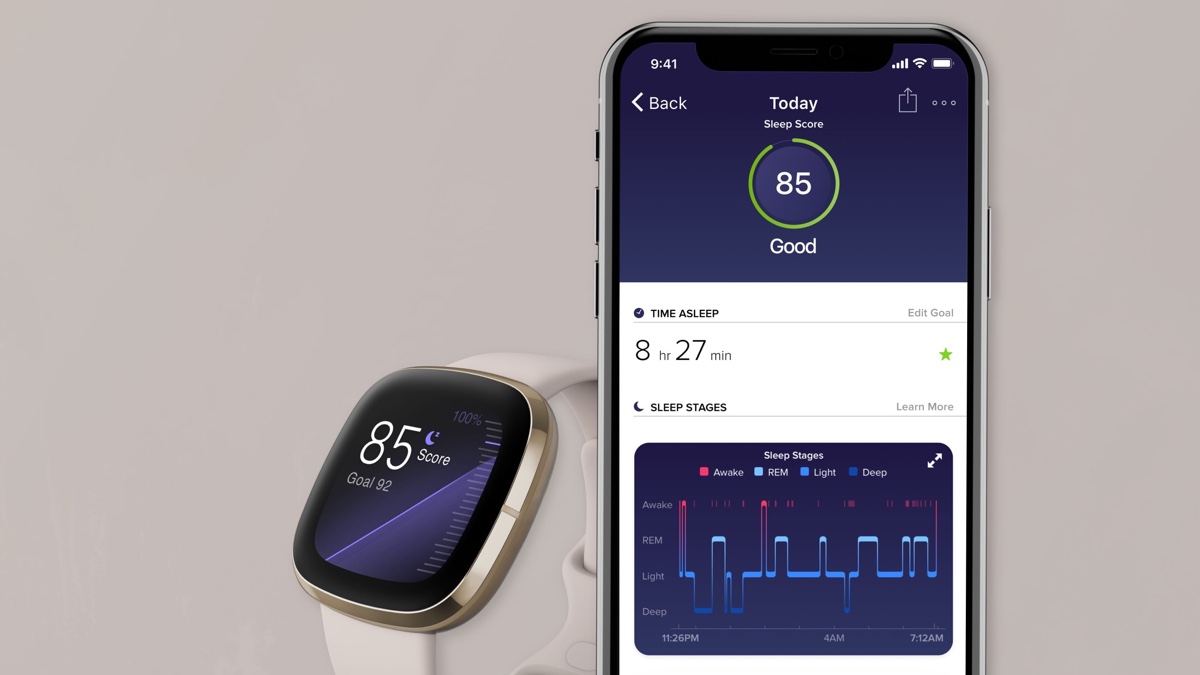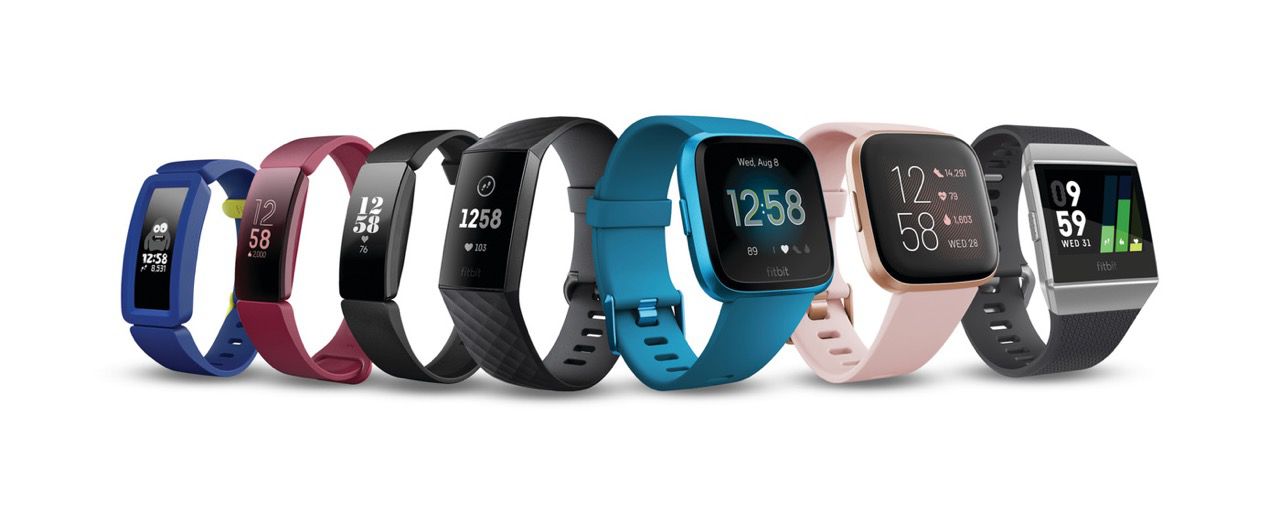Introduction
Wearable technology has revolutionized the way we monitor and improve our health and wellness. Among the various functionalities offered by wearable devices, sleep detection stands out as a crucial feature that provides valuable insights into our overall well-being. Understanding how sleep detection works, particularly in popular devices like Fitbit, can shed light on the intricate process of monitoring our sleep patterns.
Sleep plays a pivotal role in maintaining our physical and mental health. However, many of us may not be aware of the quality and duration of our sleep. This is where wearable devices such as Fitbit come into play, offering a comprehensive solution to track and analyze our sleep patterns. By delving into the mechanisms behind sleep detection, we can gain a deeper understanding of how these devices provide valuable data to help us make informed decisions about our sleep habits.
In this article, we will explore the fascinating world of sleep detection and focus on how Fitbit, a leading wearable technology company, utilizes advanced sensors and algorithms to monitor and analyze sleep patterns. By unraveling the intricacies of sleep detection, we can gain valuable insights into the factors that influence our sleep quality and duration. Let's embark on a journey to decipher the inner workings of sleep detection and unveil the technology that empowers us to take control of our sleep health.
Understanding Sleep Detection
Sleep detection is a pivotal aspect of wearable technology, enabling users to gain valuable insights into their sleep patterns and overall well-being. By comprehending the underlying principles of sleep detection, individuals can make informed decisions to enhance the quality and duration of their sleep. At its core, sleep detection involves the utilization of advanced sensors and algorithms to monitor and analyze various parameters during the sleep cycle.
The process of sleep detection encompasses the identification and interpretation of key physiological signals that indicate different stages of sleep. These signals include heart rate variability, movement patterns, and in some cases, oxygen saturation levels. By capturing and analyzing these signals, wearable devices can provide detailed reports on the duration of each sleep stage, such as light, deep, and REM (rapid eye movement) sleep.
Understanding sleep detection goes beyond mere data collection; it involves the translation of raw sensor data into meaningful insights about an individual's sleep quality and patterns. This transformation is made possible through sophisticated algorithms that process the sensor data and generate comprehensive sleep reports. These reports often include metrics such as sleep duration, sleep efficiency, and the number of awakenings during the night.
Moreover, the integration of machine learning and artificial intelligence technologies has further enhanced the accuracy and reliability of sleep detection. These advanced technologies enable wearable devices to adapt to individual sleep patterns and provide personalized recommendations for improving sleep quality.
In essence, understanding sleep detection entails recognizing the intricate interplay between sensor technologies, data analysis, and the translation of raw data into actionable insights. By delving into the mechanisms behind sleep detection, individuals can gain a deeper appreciation for the capabilities of wearable devices in monitoring and optimizing sleep health.
As we continue our exploration of sleep detection, we will delve into how Fitbit, a prominent player in the wearable technology industry, leverages innovative approaches to monitor and analyze sleep patterns. By unraveling the complexities of sleep detection, we aim to empower individuals with the knowledge to make informed choices that positively impact their sleep quality and overall well-being.
How Fitbit Detects Sleep
Fitbit employs a multifaceted approach to detect and analyze sleep patterns, leveraging a combination of advanced sensors and sophisticated algorithms. At the heart of Fitbit's sleep detection technology lies the utilization of accelerometers and heart rate monitors to capture vital physiological data during the sleep cycle.
The accelerometers embedded in Fitbit devices play a pivotal role in tracking movement patterns throughout the night. By detecting subtle movements, such as changes in body position and limb activity, the accelerometers enable Fitbit to discern different sleep stages, including periods of wakefulness, light sleep, deep sleep, and REM sleep. This comprehensive movement tracking forms the foundation of Fitbit's ability to provide detailed insights into an individual's sleep quality and duration.
In tandem with movement tracking, Fitbit's incorporation of heart rate monitoring technology adds another layer of sophistication to its sleep detection capabilities. By continuously monitoring heart rate variations during sleep, Fitbit devices can discern fluctuations associated with different sleep stages and overall sleep quality. This integration of heart rate data enhances the accuracy of sleep detection, enabling users to gain a deeper understanding of their sleep patterns and cardiovascular health.
Furthermore, Fitbit's advanced algorithms process the data collected from accelerometers and heart rate monitors to generate comprehensive sleep reports. These reports offer valuable metrics such as sleep duration, sleep efficiency, and the duration of specific sleep stages. Additionally, Fitbit's algorithms can identify and categorize periods of restlessness and awakenings during the night, providing users with detailed insights into their sleep continuity and potential disruptions.
Fitbit's commitment to innovation is evident in its continuous refinement of sleep detection technologies. The introduction of features such as Sleep Score and Sleep Stages further enhances the user experience by providing actionable insights and personalized recommendations to improve sleep quality. By leveraging machine learning and artificial intelligence, Fitbit continuously adapts its sleep detection algorithms to align with individual sleep patterns, ensuring that users receive tailored guidance for optimizing their sleep health.
In essence, Fitbit's approach to sleep detection encompasses a harmonious integration of sensor technologies, data analysis, and user-centric insights. By harnessing the power of advanced sensors and cutting-edge algorithms, Fitbit empowers individuals to gain a comprehensive understanding of their sleep patterns and make informed choices to prioritize their sleep health.
As we unravel the intricacies of how Fitbit detects sleep, it becomes evident that the company's commitment to leveraging technology for holistic wellness extends to the realm of sleep monitoring. By embracing innovation and user-centric design, Fitbit continues to set new benchmarks in the wearable technology industry, redefining the way individuals engage with their sleep health.
This comprehensive approach to sleep detection underscores Fitbit's dedication to empowering users with actionable insights and personalized guidance, ultimately fostering a culture of proactive self-care and holistic well-being.
Factors Affecting Sleep Detection
Several factors can influence the accuracy and reliability of sleep detection in wearable devices such as Fitbit. Understanding these factors is crucial for interpreting sleep data effectively and optimizing the overall sleep monitoring experience.
-
Device Placement and Fit: The positioning of the wearable device on the wrist can impact the precision of sleep detection. A secure and comfortable fit is essential to ensure that the device accurately captures movement and heart rate data during sleep. Fitbit's emphasis on ergonomic design and adjustable straps aims to address this factor, enhancing the device's ability to track sleep patterns with minimal interference.
-
User Movement Patterns: Individual variations in movement during sleep can pose challenges for sleep detection algorithms. Factors such as restless leg syndrome, periodic limb movements, and excessive tossing and turning can influence the interpretation of movement data. Fitbit's advanced algorithms strive to differentiate between intentional movements and involuntary disruptions, providing users with detailed insights into their sleep continuity.
-
Environmental Factors: Ambient conditions, such as ambient light and temperature, can impact sleep quality and duration. Wearable devices like Fitbit may incorporate environmental sensors to capture data on ambient light levels and room temperature, offering users a holistic view of how environmental factors may influence their sleep patterns.
-
Sleep Disorders and Health Conditions: Individuals with sleep disorders or underlying health conditions may exhibit atypical sleep patterns that pose challenges for standard sleep detection algorithms. Fitbit's continuous innovation in health tracking features aims to address this factor by integrating advanced sensors and personalized health insights to accommodate diverse sleep patterns and health conditions.
-
User Engagement and Compliance: The extent to which users engage with the sleep tracking features of wearable devices can influence the quantity and quality of sleep data collected. Fitbit's user-centric approach, coupled with intuitive interfaces and personalized feedback, aims to enhance user engagement and compliance, thereby optimizing the accuracy and depth of sleep detection insights.
By acknowledging these factors, individuals can gain a nuanced understanding of the complexities involved in sleep detection and leverage wearable technology effectively to prioritize their sleep health. Fitbit's commitment to addressing these factors through technological innovation and user-centric design underscores its dedication to empowering users with actionable insights and personalized guidance for optimizing sleep quality and overall well-being.
This comprehensive approach to sleep detection underscores Fitbit's dedication to leveraging technology for holistic wellness, redefining the way individuals engage with their sleep health and fostering a culture of proactive self-care.
Conclusion
In conclusion, the realm of sleep detection in wearable technology, particularly exemplified by Fitbit, represents a fusion of cutting-edge sensor technologies, advanced algorithms, and user-centric design aimed at empowering individuals to understand and optimize their sleep health. By unraveling the intricacies of sleep detection and delving into how Fitbit leverages innovative approaches to monitor and analyze sleep patterns, we gain profound insights into the interplay of technology and wellness.
Fitbit's multifaceted approach to sleep detection, incorporating accelerometers, heart rate monitors, and sophisticated algorithms, underscores the company's commitment to providing users with comprehensive and actionable insights. The integration of machine learning and artificial intelligence further enhances the accuracy and personalization of sleep tracking, ensuring that users receive tailored guidance to improve their sleep quality.
Moreover, understanding the factors that influence sleep detection, such as device placement, user movement patterns, environmental factors, sleep disorders, and user engagement, equips individuals with the knowledge to interpret sleep data effectively and optimize their sleep monitoring experience. Fitbit's dedication to addressing these factors through technological innovation and user-centric design underscores its commitment to empowering users with personalized guidance for holistic well-being.
As we navigate the evolving landscape of wearable technology, it becomes evident that sleep detection represents a pivotal dimension of self-care and proactive health management. By embracing innovation and leveraging technology to provide actionable insights, Fitbit exemplifies a holistic approach to wellness that transcends mere data collection, fostering a culture of informed decision-making and self-empowerment.
In essence, the journey into the realm of sleep detection and Fitbit's role in redefining sleep monitoring unveils a compelling narrative of technological innovation converging with personal well-being. By understanding the intricacies of sleep detection and embracing the advancements pioneered by companies like Fitbit, individuals can embark on a transformative path towards prioritizing their sleep health and embracing a lifestyle centered on holistic wellness.
Through the lens of sleep detection, we witness the profound impact of wearable technology in empowering individuals to gain deeper insights into their sleep patterns, make informed decisions about their well-being, and embark on a journey towards restorative and rejuvenating sleep. Fitbit's unwavering dedication to advancing sleep tracking capabilities embodies a paradigm shift in how individuals engage with their sleep health, setting new standards for personalized wellness and self-care.
In closing, the fusion of technology and wellness epitomized by sleep detection in wearable devices reflects a harmonious synergy that transcends mere data points, offering a profound narrative of empowerment, self-discovery, and proactive health management. As we embrace the future of wearable technology, the narrative of sleep detection serves as a compelling testament to the transformative potential of technology in nurturing holistic well-being and empowering individuals to embark on a journey towards rejuvenating and restorative sleep.





















